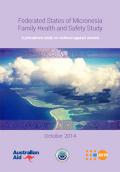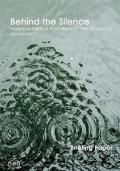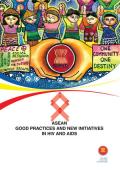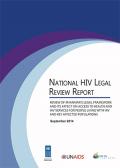What's New
Displaying results 3221 - 3230 of 4914

Resource | Publications,
The FSM Family Health and Safety Study (FHSS) aimed to gauge the prevalence and types of violence against women (VAW) in the FSM. The study also sought to document the associations between partner violence and the wellbeing of the woman and her children, as well as to identify risk and protective factors for partner violence. The FSM Department of Health and Social Affairs (DHSA) carried out the study with financial support from the Australian Government’s Department of Foreign Affairs and Trade (DFAT) and with financial and technical support from the United Nations Population Fund (UNFPA).
The methodology of the study is based on the WHO Multi-Country Study on Women's Health and Domestic Violence Against Women, which combines quantitative and qualitative components and adheres to international ethical and safety standards.

Resource | Publications,
Violence against women is a serious and reprehensible human rights violation that directly and indirectly affects the health, livelihood and opportunities of women in Myanmar. Civil society actors, government authorities and international agencies increasingly recognize the extent and scope of this issue across the country. However, there has been little rigorous research conducted on this topic among women in Myanmar's general population. This qualitative study on violence against women helps to fill the gap on what is known about women's experiences of abuse and violence by their husband and other men. This briefing paper provides a summary of the research finding from the full report.

Resource | Publications,
The Belau Family Health and Safety Study (FHSS) aimed at obtaining reliable data on the prevalence and types of violence against women (VAW) in Palau. The study also sought to document the associations between partner violence and health issues and other outcomes, as well as to identify risk and protective factors for partner violence. The Ministry of Health carried out the study with financial support from the Australian Government’s Department of Foreign Affairs and Trade (DFAT), and financial and technical support from the United Nations Population Fund (UNFPA).

Resource | Presentations,
Presentation prepared by
UNAIDS Asia-Pacific and Data Hub for the 11th UNAIDS Asia-Pacific Regional Management Meeting,
Bangkok, 25-28 October 2014

Resource | Fact Sheets,
In October 2014, there were 537 new HIV Ab sero-positive individuals confirmed by the STD/AIDS Cooperative Central Laboratory (SACCL) and reported to the HIV and AIDS Registry. This was 9 higher compared to the same period last year.

Resource | Presentations,
Regional Posters prepared by UNAIDS Asia-Pacific and Data Hub for the 11th UNAIDS Asia-Pacific Regional Management Meeting in Bangkok, 25-28 October 2014.

Resource | Fact Sheets,
In September 2014, there were 565 new HIV Ab seropositive individuals confirmed by the STD/AIDS Cooperative Central Laboratory (SACCL) and reported to the HIV and AIDS Registry (Table 1). This was 32 % higher compared to the same period last year (n=427) [Figure 1].

Resource | Publications,
The establishment of the ASEAN Task Force on AIDS (ATFOA) in 1993 has provided the mechanism to operationalise the initial commitment made by the ASEAN Leaders during the 4th ASEAN Summit in 1992. To further foster the political commitments on HIV and AIDS, ATFOA spearheaded the development of the ASEAN Declaration of Commitment. To operationalise the Declaration, ATFOA proposed and got approval for a number of key initiatives that support the Declaration strategies, including the documentation of good practices, innovations, and other cross-cutting themes in HIV and AIDS that became the basis of this publication.

Resource | Publications,
This report presents the key findings and recommendations of the review of Myanmar's legal framework and its effect on access to health and HIV prevention and treatment services for people living with HIV and key populations.
The review was conducted through partnership of UNAIDS, UNDP, and Pyoe Pin in the period August-December 2013, in consultation with the National AIDS Programme.






